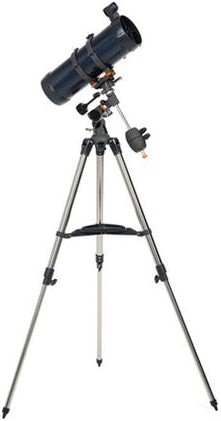There’s no better way to make science come alive than giving students a first-hand glimpse of an alien world. Even if you don’t have much experience with telescopes yourself, we’ve got you covered. Check out these ideas for inspiring the next generation of astronomers.
How Telescopes Work
Before you even take your telescope outside, bring it into the classroom and let your students familiarize themselves with its optics. Whether your telescope is a refractor, reflector, or Cassegrain, you can demonstrate how the light travels through the telescope into the eyepiece to produce an observable image. Our guide to the different telescope designs is a great place to get started.
Bonus: Have students compare and contrast your telescope to the one Galileo built in the 1600s!
Host a Schoolwide Star Party
This one will take some planning, but a star party really is the best way to introduce students to astronomy. Consider holding yours after the clocks fall back, so your event can be well underway by 6:00 or 7:00 p.m.
Reach out to a local astronomy club, and see if they’d be willing to send some members with telescopes to your event. You’ll likely get a full force of knowledgeable amateur astronomers with several different types of telescopes for kids to use.
There are lots of ways to make this a fun event for students, their siblings, parents, and the entire community. You could consider having the school band perform, setting up a touch table with a few meteorites, or inviting local food trucks to serve up treats. Who knows, you could turn a night of science and discovery into your school’s most popular annual event!
Terrestrial Viewing with Telescopes and Binoculars
Once your star party is over, the excitement doesn’t have to stop during the daylight hours! Refractor style telescopes produce right-side-up images, which makes them ideal for terrestrial viewing during the day. If you have a park or nature center close to your school, bring the telescope there and teach students about viewing birds and wildlife. A spotting scope or a few pairs of binoculars are great for this, too.
Safe Solar Viewing
Help your students get to know our closest star by observing the Sun with a safe solar filter. Make sure you purchase one that covers the full telescope aperture, like these from AstroZap. You’ll be able to view sunspots and other solar activity with even an entry-level telescope. Solar glasses are an affordable tool and perfect for viewing eclipses.
We recommend solar viewing for older students. Get a signed permission slip and follow all safety precautions. You can learn more about safe solar viewing by reading our guide.
View an Astronomical Event Online
It’s always nighttime somewhere in the world, so hop online and view a live telescope feed from your classroom! NASA and other government agencies stream the most popular celestial events for free, but you can take your experience even further by signing up for online telescope access. Subscription services like Slooh go beyond streaming and allow your students to actually control telescopes thousands of miles away and even capture their own images of celestial objects. Slooh offers a free 30-day trial and costs $19.95 per month after that.

